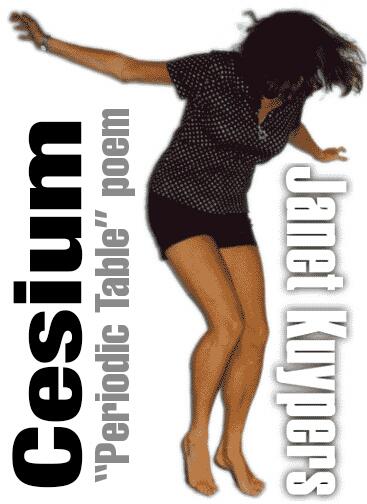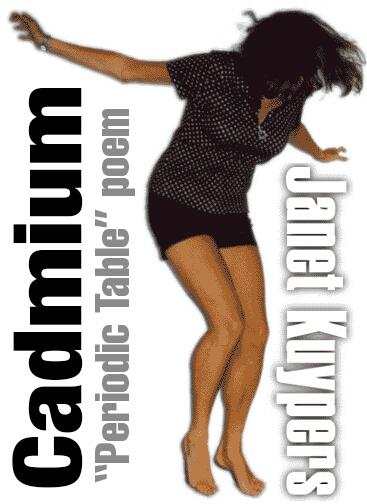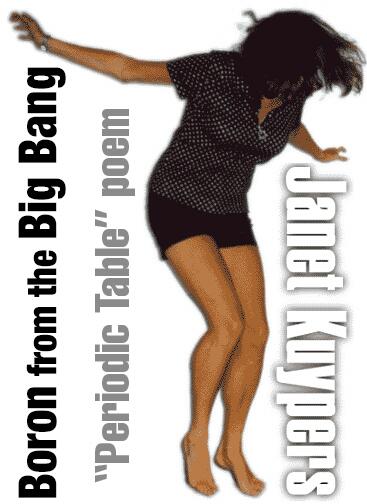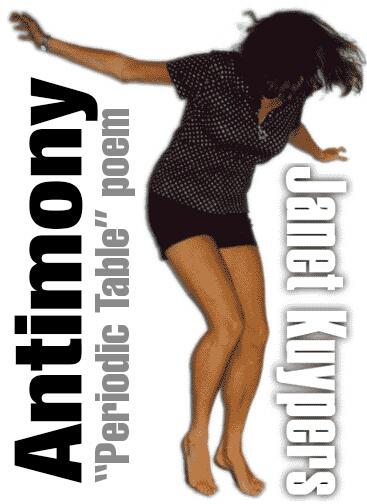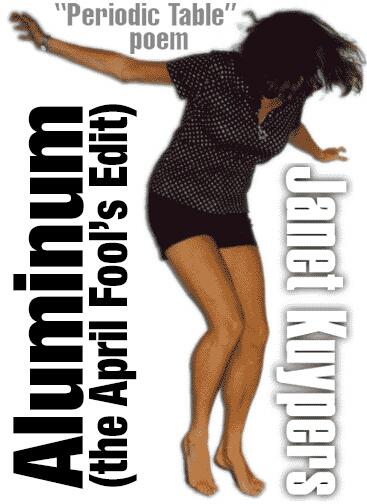Cerium
by Janet Kuypers
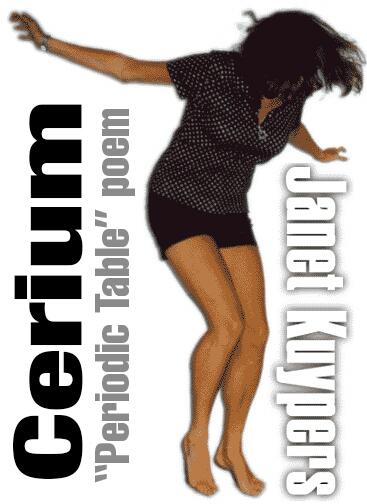
from the “Periodic Table of Poetry” series (#58, Ce)
including the poem “Jumping from the Skyline to the Clouds”
8/6/13
Joining commuters driving
toward the Chicago Loop,
I watched majestic skyscrapers
frame the skyline,
as I witnessed over Lake Michigan
early morning clouds —
thin at the top, each cloud looked
like a snow-capped mountain,
framing this flat-land city, and
surrounding the skyscraper skyline…
But all those clouds
were only formed in the mornings
by the early morning weather,
pulling water daily from Lake Michigan.
When the water from the lake
is warmer than the dew point,
water rises until the air is cold enough
so that lake water forms those clouds.
But the thing is, Lake Michigan
is more than hydrogen and oxygen —
at times they even warn the public
to not go into the unsafe water
(the same water Chicago filters
for everyone to shower in, or drink).
So I checked some of the studies
on what foreign compounds
Lake Michigan actually contains —
at times you can find everything
from cadmium, mercury, lead or zinc,
to copper, chromium, even selenium.
That list included harmful elements,
but the numbers that were really
off the charts came from Cerium.
Cerium acts like calcium
in the human body, and you can
find a lot of Cerium in tobacco plants —
and with Cerium’s moderate toxicity,
prolonged exposure can lead to
itching, heat sensitivity or skin lesions.
And wait a minute, Cerium can
spontaneously ignite if the air
is hot, and you may be thinking
that if Cerium’s in water it should
be safe, but water can’t be used
to stop a Cerium fire, since Cerium
reacts with water to make hydrogen gas.
Well, if Cerium fire fumes are toxic,
then so much for Lake Michigan being
good for you — even when Chicago
has multiple water purification plants.
Because Cerium in the water
that forms those morning clouds
is one thing, but no matter the toxicity
of Cerium, remember that us humans
are over seventy percent water.
With all the compounds
that Cerium goes into,
it’s probably best if Cerium’s left
to it’s industrial uses, instead
of working it’s way in our water…
And besides, it’s nice to think
that those beautiful morning clouds
framing the Chicago skyline
with snow-capped mountains
are actually more than just hydrogen
and oxygen, because every once
in a while, look at that morning sky.
Because in just the right way,
a little Cerium
can really go a long way.
